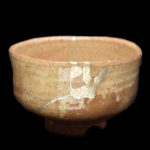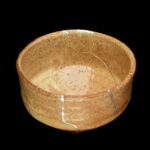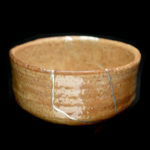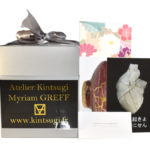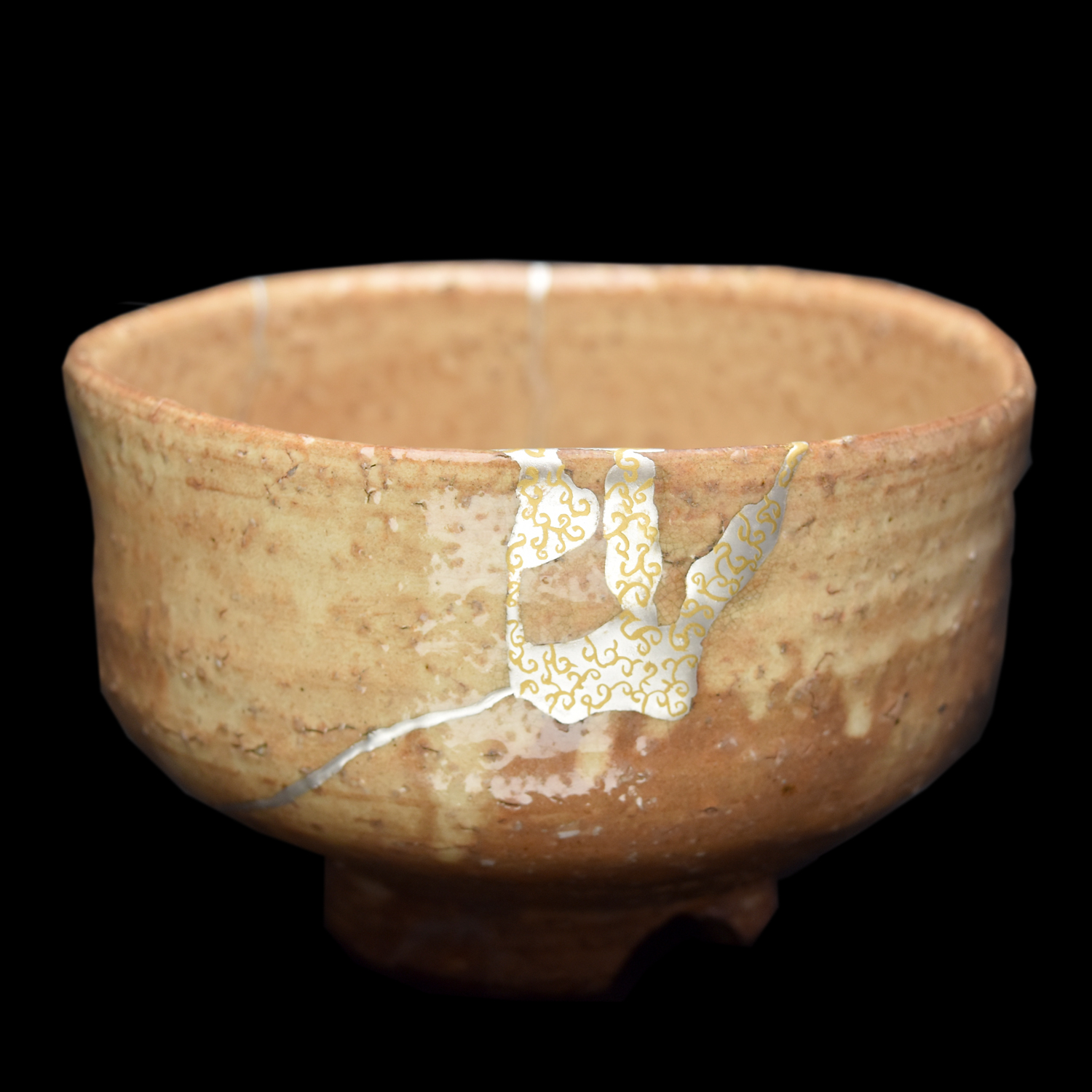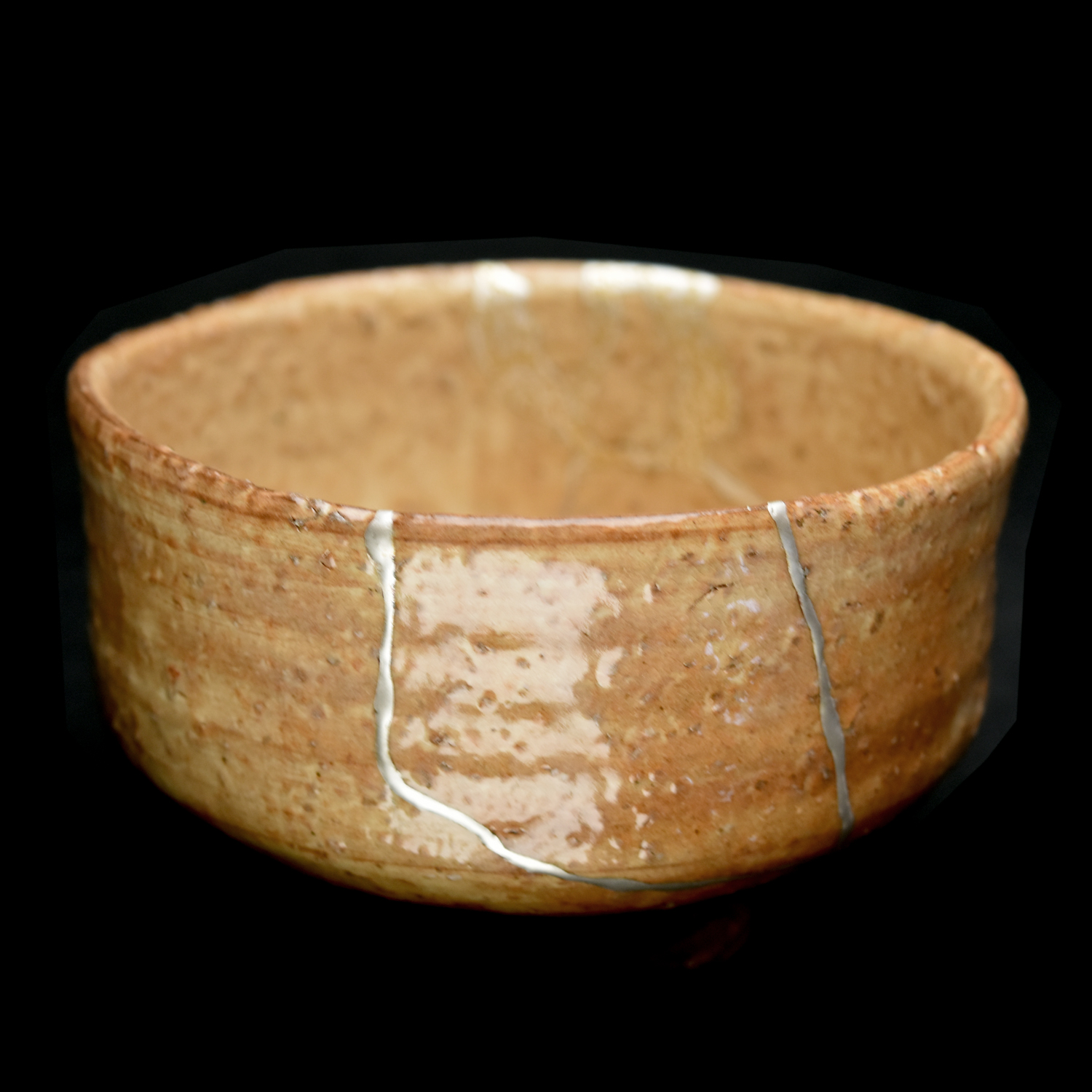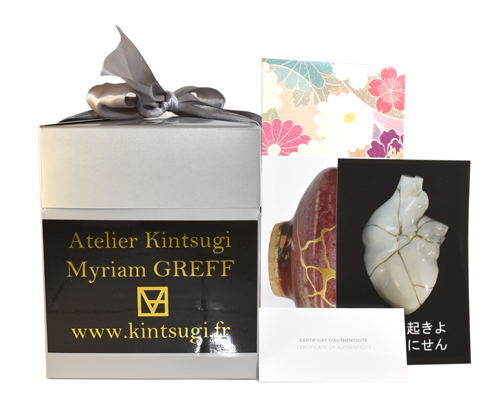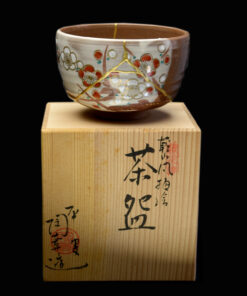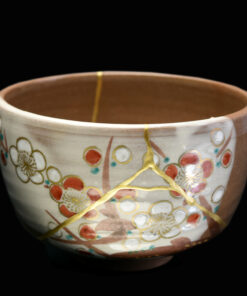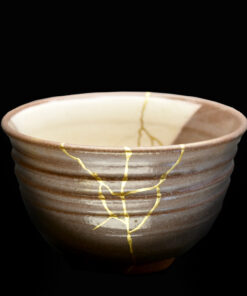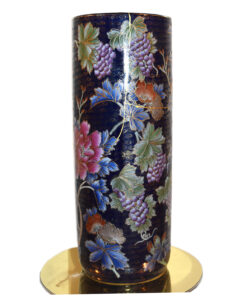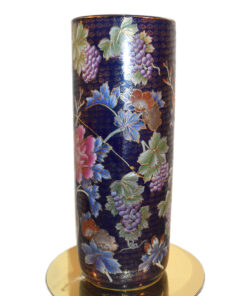Hagi chawan gintsugi and makienaoshi
550 € VAT excl.
In stock
For express shipping please contact us before purchase as prices are difficult to calculate automatically on the website.
This superb bowl is emblematic of a great tradition of Japanese pottery: Hagi-Yaki. These are ceramics historically created in the town of Hagi in Yamaguchi prefecture, a craft tradition that goes back almost 400 years. They are identifiable by their sober shapes, which are pleasant to the touch, and above all by their delicate glaze, which allows the color of the clay to shine through.
This is a chawan, a bowl designed for the tea ceremony and the drinking of matcha (beaten green tea). Hagi ceramics are well known to tea and sake enthusiasts: not only does the clay used retain heat well (so you can take your time sipping your beverage), but above all the glaze is lightly stippled: this allows liquids to seep through and gives it a lovely patina over time.
Accidentally broken, this 12 cm diameter, 8 cm high chawan has been restored using the traditional kintsugi technique, with natural lacquer and silver powder. This is the only restoration technique that preserves an object’s edible use: you can therefore reuse this bowl to drink your favorite tea, or simply display it as an object to admire.
This unique piece, signed by the potter, comes with a certificate of authenticity.
Myriam’s eye:
For this chawan, I used a variant of kintsugi: gintsugi. Instead of gold, the finish is silver. This rarer, traditional technique has also been used for centuries by Japanese craftsmen, and enables other effects to be achieved between the restoration and the color of the object. Here, the silver blends particularly well with the slightly pink hues of the hagi glaze, offering a refined contrast that adds to the charm of the restored piece.
| Diameter | 12cm / 4.7inch |
|---|---|
| Height | 8cm / 3 1/4inch |
| Origin | Hagi, Japan |
| Food Safe | Yes |
| Certificate of Authenticity | Provided |
| Color | Pink |
| Shape | Han tsutsu-gata |
| Materials | 24 carats Gold, Japanese sandstone, Urushi (Japanese lacquer) |
Related products
Masterpieces

